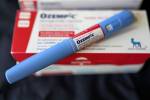Protecting your health by seeking signs of prediabetes
Dear Savvy Senior: My 62-year-old sister was recently diagnosed with type 2 diabetes and was surprised when the doctor told her that she’s probably had it or prediabetes for many years.
What determines prediabetes and how can you know if you have it? — Surprised Senior
Dear Surprised: Underlying today’s growing epidemic of type 2 diabetes is a much larger epidemic called prediabetes, which is when the blood sugar levels are higher than normal but not high enough to be called diabetes.
The National Institutes of Health estimates that as many as 79 million Americans today have prediabetes. Left untreated, it almost always turns into type 2 diabetes within 10 years. And, if you have prediabetes, the long-term damage it can cause — especially to your heart and circulatory system — may already be starting.
The good news is that prediabetes doesn’t mean that you’re destined for full-blown diabetes. Prediabetes can be reversed, and diabetes prevented, by making simple lifestyle changes such as losing weight, exercising, eating a healthy diet and reducing carbohydrates. If you need more help, oral medications may also be an option.
GET CHECKED
Because prediabetes typically causes no outward symptoms, most people that have it don’t realize it. The only way to know for sure is to get a blood test.
Everyone age 45 years or older should consider getting tested for prediabetes, especially if you are overweight with a body mass index (BMI) higher than 25. Visit cdc.gov/bmi to calculate your BMI.
If you are younger than 45 but are overweight, or have high blood pressure, a family history of diabetes, or belong to an ethnic group (Latino, Asian, African or Native American) at high risk for diabetes, you, too, should get checked.
To help determine your risk of diabetes, the American Diabetes Association has a quick, online quiz you can take for free at diabetes.org/are-you-at-risk.
TESTS
There are several tests your doctor can give you to determine whether you have prediabetes like the “fasting blood glucose test” or the “oral glucose tolerance test,” that each require an eight-hour fast before you take it. And the “hemoglobin A1C test,” that can be taken any time regardless of when you ate.
If you’re reluctant to visit your doctor to get tested, you can test yourself. You’ll need to buy an A1C home test kit that measures your average blood glucose over the past two to three months.
The ReliOn A1c Test sold at Wal-Mart (or walmart.com) for $9 is a popular option. With this test kit, you provide a small blood sample (about a drop), and send it to the lab in a postage-paid return mailer for analysis. The results are usually sent back within a week.
A1C tests measure the percentage of glucose in the bloodstream. A reading of 5.7 to 6.4 percent is considered prediabetes; 6.5 percent or greater is diabetes.
If you find that you are prediabetic or diabetic, you need to see your doctor to develop a plan to get it under control.
For more information on prediabetes and diabetes visit the American Diabetes Association at diabetes.org, and the National Diabetes Education Program (ndep.nih.gov), which also offers dozens of free publications you can order online or by calling 888-693-6337.
Send your senior questions to: Savvy Senior, P.O. Box 5443, Norman, OK 73070, or visit savvysenior.org. Jim Miller is a contributor to the NBC Today show and author of “The Savvy Senior” book.























